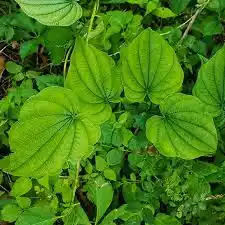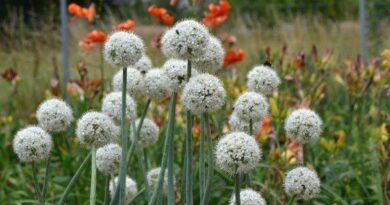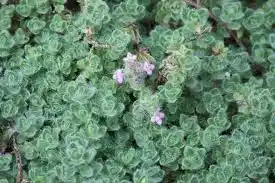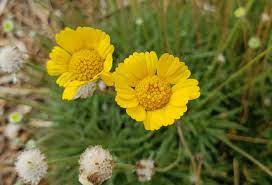10 Medicinal Health Benefits Of Wild Yam (Dioscorea villosa)
Wild Yam, scientifically known as Dioscorea villosa, is a perennial climbing vine native to North America. This plant, also known as “colic root” or “Mexican wild yam,” has a long history of traditional use, particularly among Native American cultures and in traditional herbal medicine.
The root of the Wild Yam is the part of the plant that is primarily utilized for its potential medicinal properties.
The tuberous roots of Wild Yam contain various compounds, including diosgenin, a steroidal saponin. It’s important to note that while diosgenin is used as a starting material for the synthesis of some steroid hormones, the body does not convert it into hormones like progesterone as is sometimes mistakenly believed.
Nevertheless, Wild Yam has been historically used in traditional medicine for its perceived benefits, especially in supporting women’s health.
One of the traditional uses of Wild Yam is associated with women’s reproductive health. It has been used to address menstrual discomfort and symptoms associated with menopause.
While Wild Yam itself doesn’t contain hormones, some herbal formulations and creams may include Wild Yam extract for its potential influence on hormonal balance.
However, scientific evidence supporting its effectiveness for hormonal concerns is limited, and it’s essential to consult with a healthcare professional before using Wild Yam or any herbal remedy for hormonal health.
In addition to its traditional use for women’s health, Wild Yam has been employed for various other purposes. It is sometimes used for its anti-inflammatory properties and has been traditionally used to alleviate digestive discomfort, such as colic and spasms.
It’s important to approach the use of Wild Yam with caution and under the guidance of a qualified healthcare professional. While it has a history of traditional use, more research is needed to fully understand its mechanisms of action and potential health benefits.
Moreover, individual responses to herbal remedies can vary, and potential interactions with medications should be considered.
Wild Yam, with its climbing vines and tuberous roots, has a place in traditional medicine, particularly for women’s health. Its historical use in addressing reproductive and digestive concerns has made it a subject of interest in herbal medicine.
As with any herbal remedy, it is advisable to seek guidance from a healthcare professional to ensure safe and appropriate use.
The Botanical Description of Wild Yam
Wild Yam, scientifically known as Dioscorea villosa, is a perennial climbing vine belonging to the Dioscoreaceae family. The plant is characterized by its twining stems, heart-shaped leaves, and inconspicuous greenish-yellow flowers. The botanical features of Wild Yam vary based on its species and environmental conditions.
1. Twining Stems: One of the distinctive features of Wild Yam is its twining stems, which allow the plant to climb and intertwine with surrounding vegetation for support. This adaptation is crucial for the plant’s growth and reproduction.
2. Heart-shaped Leaves: The leaves of Wild Yam are typically heart-shaped, exhibiting a smooth texture and deep green color. The size of the leaves may vary, with some species displaying larger leaves than others.
3. Greenish-yellow Flowers: Wild Yam produces small, greenish-yellow flowers that are often inconspicuous. These flowers are arranged in clusters and contribute to the plant’s reproductive process, eventually leading to the formation of yam-like tubers underground.
4. Tuberous Roots: Below the soil surface, Wild Yam develops tuberous roots that store essential nutrients for the plant’s survival. These tubers are a vital part of the plant’s reproductive and growth strategy.
5. Varied Species: Wild Yam encompasses various species within the Dioscorea genus, each exhibiting unique botanical characteristics. Some species may have variations in leaf size, flower arrangement, or growth habits.
The Geographic Distribution of Wild Yam
1. North America: Wild Yam is native to North America, where it thrives in diverse ecosystems ranging from woodlands to meadows. The plant’s natural habitat spans regions with temperate climates, including parts of the United States and Canada.
2. Central and South America: Beyond North America, Wild Yam is also found in Central and South American regions. Countries such as Mexico, Brazil, and Peru host different species of Wild Yam, each adapted to the specific environmental conditions of its location.
3. Asia: Some species of Wild Yam are native to Asian countries, contributing to the plant’s global distribution. In regions like China and Japan, Wild Yam has historical significance and traditional uses.
4. Europe: While not native to Europe, Wild Yam has been introduced to certain European regions. The plant has been cultivated in botanical gardens and is occasionally found in the wild in specific European countries.
5. Cultivation in Other Regions: Due to its adaptability, Wild Yam has been cultivated in various regions worldwide. The plant’s resilience and ability to thrive in different climates make it a versatile addition to gardens and agricultural practices.
The Chemical Composition of Wild Yam
1. Diosgenin: Wild Yam is renowned for containing diosgenin, a compound with potential health benefits. Diosgenin is a steroid sapogenin and serves as a precursor for the synthesis of corticosteroids and sex hormones.
2. Steroidal Saponins: The plant contains steroidal saponins, which contribute to its anti-inflammatory and antioxidant properties. These compounds are valued for their potential in supporting overall health.
3. Alkaloids: Wild Yam may contain alkaloids, though the specific types and concentrations can vary among different species. Alkaloids contribute to the plant’s pharmacological properties.
4. Flavonoids: Flavonoids, known for their antioxidant effects, are present in Wild Yam. These compounds play a role in the plant’s ability to combat oxidative stress and contribute to its potential health benefits.
5. Starch and Carbohydrates: The tuberous roots of Wild Yam store starch and carbohydrates, serving as an energy reserve for the plant. This nutrient storage is essential for the plant’s growth and survival.
6. Beta-carotene: Some species of Wild Yam contain beta-carotene, a precursor to vitamin A. Beta-carotene has antioxidant properties and is beneficial for maintaining skin health and supporting the immune system.
7. Vitamin C: Wild Yam may contain vitamin C, adding to its nutritional profile. Vitamin C is an essential nutrient with antioxidant properties that contribute to overall health.
8. Tannins: Tannins, with their astringent properties, are found in Wild Yam. These compounds may have implications for the plant’s traditional uses in herbal medicine.
9. Copper and Iron: Wild Yam contains trace amounts of essential minerals, including copper and iron. These minerals play roles in various physiological processes within the plant.
Read Also: 15 Medicinal Health Benefits Of Silver Birch (Betula pendula)
The Medicinal Health Benefits Of Wild Yam (Dioscorea villosa)

1. Hormonal Balance: Wild Yam supports hormonal balance, particularly in women, due to its diosgenin content, influencing hormone production for menstrual and reproductive health.
2. Menopausal Symptom Relief: Traditionally used to alleviate menopausal symptoms like hot flashes and mood swings, Wild Yam’s hormonal-regulating properties offer relief during this transitional phase.
3. Anti-Inflammatory Properties: Exhibiting anti-inflammatory effects, Wild Yam may help with conditions characterized by inflammation, such as arthritis or digestive inflammation.
4. Digestive Support: Used in traditional medicine for digestive health, Wild Yam’s anti-inflammatory effects contribute to soothing gastrointestinal discomfort and promoting overall digestive well-being.
5. Respiratory Health: Traditionally beneficial for respiratory health, Wild Yam may alleviate symptoms associated with respiratory conditions, offering relief for coughs or bronchial irritation.
6. Antioxidant Effects: Wild Yam’s flavonoids and antioxidants combat oxidative stress, playing a crucial role in neutralizing free radicals and supporting cellular health.
7. Muscle Relaxation: With potential muscle relaxant properties, Wild Yam is valuable for alleviating muscle cramps or spasms, contributing to muscular discomfort relief.
8. Cardiovascular Support: Some studies suggest that Wild Yam may regulate blood pressure, offering cardiovascular benefits and supporting heart health.
9. Anti-spasmodic Effects: Known for anti-spasmodic properties, Wild Yam helps alleviate spasms and cramps in various body parts, contributing to overall muscle relaxation.
10. Immune System Modulation: Research indicates that Wild Yam may modulate the immune system, potentially enhancing immune function and overall health.
The Methods of Usage to Achieve the Provided Health Benefits Of Wild Yam (Dioscorea villosa)
1. Herbal Infusions: Prepare herbal infusions by infusing dried Wild Yam root in hot water for hormonal balance and overall health benefits.
2. Tinctures: Tinctures, concentrated liquid extracts, offer a convenient way to consume Wild Yam’s active compounds, providing quick absorption.
3. Capsule Supplements: Capsule supplements provide a standardized dosage for easy incorporation into daily wellness routines.
4. Topical Creams and Ointments: For muscle or joint discomfort, use topical creams and ointments with Wild Yam extract for localized relief.
5. Traditional Culinary Uses: Incorporate Wild Yam tubers into the diet for traditional and holistic health benefits, even though concentrations may be lower in cooked tubers.
6. Poultices: Apply crushed or powdered Wild Yam externally as poultices to areas experiencing discomfort for direct skin contact and absorption.
7. Herbal Combinations: Combine Wild Yam with other herbs to enhance effects or address specific health concerns under healthcare professional guidance.
8. Traditional Formulations: In traditional medicine, use specific formulations or decoctions containing Wild Yam for a holistic approach to health.
The Side Effects Of Using Wild Yam Medicinal Plant
1. Allergic Reactions: Exercise caution for potential allergic reactions, including skin rashes, itching, or respiratory symptoms, especially in individuals with Dioscorea allergies.
2. Gastrointestinal Discomfort: Avoid excessive consumption to prevent gastrointestinal discomfort like nausea or diarrhea; follow recommended dosages.
3. Interaction with Medications: Consult healthcare professionals, especially for those on hormone or blood clotting medications, as Wild Yam may interact.
4. Photosensitivity: Monitor for potential photosensitivity after using Wild Yam topically; caution is recommended.
5. Pregnancy and Lactation: Pregnant and breastfeeding individuals should avoid Wild Yam without consulting healthcare professionals due to potential hormonal effects.
6. Hormonal Conditions: Use Wild Yam cautiously for individuals with existing hormonal conditions, requiring monitoring by healthcare professionals.
7. Not a Substitute for Professional Medical Advice: Wild Yam is not a substitute for professional medical advice; consult healthcare professionals for specific health concerns.
8. Discontinue Before Surgery: Discontinue Wild Yam a few weeks before surgery due to potential effects on blood clotting that may interfere with surgical outcomes.
9. Potential Interactions with Birth Control: Consult healthcare professionals for guidance, as Wild Yam’s hormonal influence may interact with contraceptives.
10. Individual Variability: Responses to Wild Yam can vary; monitor for unexpected reactions and seek medical advice if concerns arise.
Read Also: Apple Orchards: Growing and Care Guide
The Scientific Research and Studies of Wild Yam

1. Hormonal Influence Studies: Scientific research has explored Wild Yam’s hormonal impact, focusing on diosgenin. This compound may influence hormone synthesis, impacting hormonal balance.
2. Menopausal Symptom Relief Trials: Clinical trials investigated Wild Yam for menopausal symptom relief, with results indicating potential reductions in hot flashes and mood swings.
3. Anti-Inflammatory Properties Investigations: Studies examined Wild Yam’s anti-inflammatory potential, suggesting modulation of inflammatory responses.
4. Digestive Health Research: Research supports Wild Yam’s traditional use for digestive health, highlighting its anti-inflammatory effects.
5. Respiratory Health Evaluations: Studies explored Wild Yam’s benefits for respiratory health, indicating potential relief for respiratory symptoms.
6. Antioxidant Effects Examinations: Scientific investigations highlighted Wild Yam’s antioxidant effects, combating oxidative stress for cellular health.
7. Muscle Relaxant Properties Research: Studies delved into Wild Yam’s muscle relaxant properties, offering relief from muscle cramps.
8. Cardiovascular Health Studies: Some studies indicated Wild Yam’s cardiovascular benefits, including blood pressure regulation and vasodilatory effects.
9. Anti-spasmodic Effects Analysis: Research into anti-spasmodic effects showcased Wild Yam’s potential to alleviate spasms and cramps.
10. Immune System Modulation Investigations: Studies suggested Wild Yam’s immune system modulation, enhancing overall immune function.
The Safety Precautions and Recommendations In Using Wild Yam Medicinal Plant
1. Dosage Adherence: Adhere to recommended dosages to prevent gastrointestinal discomfort, emphasizing prescribed or suggested dosages.
2. Allergy Monitoring: Exercise caution for potential allergic reactions, monitoring for skin rashes or respiratory symptoms.
3. Interaction with Medications: Consult healthcare professionals, especially for hormone or blood clotting medications, to avoid interactions.
4. Photosensitivity Awareness: Be aware of potential photosensitivity after topical use, taking precautions to avoid excessive sun exposure.
5. Pregnancy and Breastfeeding Caution: Avoid Wild Yam during pregnancy and breastfeeding without consulting healthcare professionals.
6. Monitoring Hormonal Conditions: Use Wild Yam cautiously with existing hormonal conditions, monitoring by healthcare professionals.
7. Discontinuation Before Surgery: Discontinue Wild Yam before surgery due to potential effects on blood clotting that may interfere with outcomes.
8. Potential Interactions with Birth Control: Consult healthcare professionals for guidance, as Wild Yam may interact with contraceptives.
9. Individual Variability Consideration: Responses to Wild Yam can vary, requiring monitoring and seeking medical advice if concerns arise.
10. Professional Guidance: Wild Yam is not a substitute for professional advice. Consult healthcare professionals for specific health concerns.
FAQs About Wild Yam Medicinal Plant
1. Is Wild Yam Safe for Long-Term Use? Yes, with recommended dosages. Consult healthcare professionals for personalized guidance.
2. Can Wild Yam Interact with Hormonal Medications? Consult healthcare professionals for potential interactions.
3. Are Allergic Reactions Common with Wild Yam? Rare, but monitor for skin rashes or respiratory symptoms.
4. Can Wild Yam Be Used During Pregnancy? Avoid without consulting healthcare professionals due to potential hormonal effects.
5. What Precautions Should Be Taken for Topical Use? Be aware of photosensitivity and perform patch testing for sensitive skin.
6. Is Wild Yam Safe for Individuals with Digestive Issues? Consult healthcare professionals for personalized advice.
7. Can Wild Yam Be Combined with Other Herbal Supplements? Yes, under healthcare professional guidance.
8. Does Wild Yam Have Sedative Effects? Not strong sedative effects, but individual responses may vary.
9. Can Wild Yam Be Used for Respiratory Conditions? Consult healthcare professionals for proper diagnosis and treatment.
10. Is Wild Yam Suitable for Individuals with Cardiovascular Issues? Approach cautiously; consult healthcare professionals for recommendations.
11. How Quickly Can Wild Yam Show Results for Menopausal Symptoms? Results vary; consistent use over weeks may be required.
12. Can Wild Yam Be Used in Children? Approach with caution, consulting healthcare professionals for appropriate dosages and safety considerations.
Read Also: Advantages of Waste Recycling









